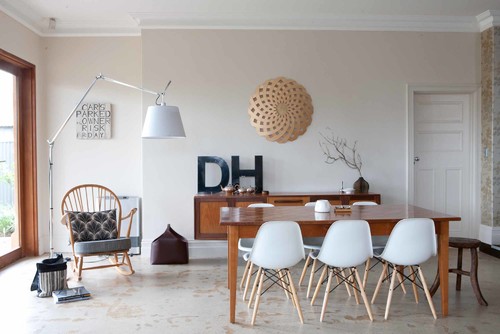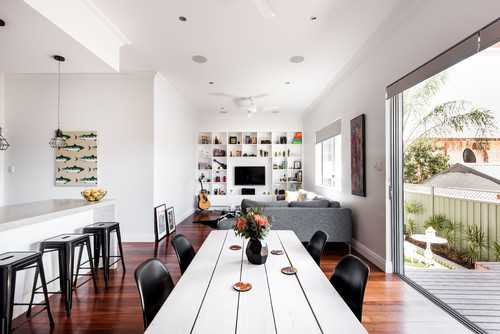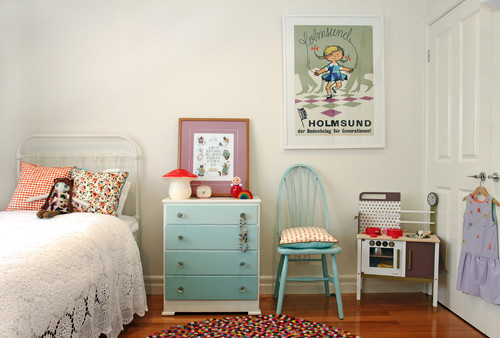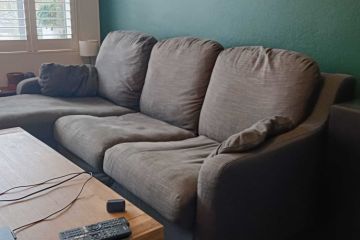How to tell roadside trash from treasure

Author: Georgia Madden on Houzz
In this practical series, we ask experts to answer your burning design and decorating questions. Here, Natasha Dickins, DIY specialist and furniture maker at Little Red Industries, reveals the signs of quality to look for in an unwanted piece you might find in a garage sale or council cleanup.
While a roadside find can be a real treasure, it can also be roadside rubbish. There are a few tricks to make sure you don’t come home with something that will eventually end up back on the kerb.
It’s false economy to save pieces that you won’t ever use, that are too big and bulky to fit in the car, or will take up space in the garage for years to come.
If you go looking for it, odds are you simply won’t find it. Roadside finds usually pop up unexpectedly, so know what to look for and be ready for them at any time!
Have a roadside pick-up criteria
There’s no point picking up a piece that is broken beyond repair, out of your DIY skill range, or that you’re really not going to work on in the near future. The trick is to be prepared to let it go if it doesn’t meet your criteria.
Here’s mine:
- Is it love at first sight? If not, drive on.
- Does it have nice lines, is it a shape that you like and does it fit your decor?
- Is it infested with bugs or spiders that could escape in the car or at home?
- Is it structurally sound? See if the frame is bent beyond repair, rusted through, or if the timber is cracked, split or rotten.
- Which part is broken and do you have the skills and tools to fix it?
- How long will it take you to fix?
- Which part dates it most and can you replace it with something modern?
- Will it genuinely be of use when it’s been restored?
- Will it result in divorce? I’ve promised my long-suffering hubby to abide by the criteria and only bring home the pieces that have genuine potential.
Solid timber is best
Solid timber always gives a much nicer finish than veneered chipboard or melamine, plus it’s easier to work with. Be wary of laminate furniture that appears to have been left out in the weather. It’s usually made of chipboard, which absorbs moisture and gets distorted. There’s no fixing it, so unless it’s a cabinet door or a maybe tabletop that can be replaced, let it go.
If the handles, legs and feet are a nice shape and easily removed, could you use them for something else? Maybe take the legs from an old cabinet and put them on a bedside table. Or take the handles and use them for kitchen drawers.
Lots of mid-century furniture was built using teak. While the varnish may have yellowed or peeled, if the piece is solid timber, it can usually be sanded, stripped back and revived with furniture oil or wax. Small mid-century dressers, phone tables, nested or coffee tables and wall shelves are easy to sand and re-varnish or simply paint.
Know what to leave behind…
Don’t pick up mattresses, pillows or anything that could have a serious bug infestation. And leave any pieces that won’t fit into your car or your home.
While I love the turned legs and ornate arms of Victorian-style armchairs, they’re bulky and take up a lot of floor space. They literally wouldn’t fit into my home – which has a very small hallway – or complement my light and compact mid-century-style furniture.
…and check again before you put something in the car
I was wrangling an old rocking horse into the boot when a mass of tiny cockroaches swarmed out of it. It just wasn’t worth driving two hours with the potential of so many bugs in the car!
On closer inspection, it wasn’t particularly well-upholstered and the body was made out of soggy straw, which I suspect was what attracted the bugs. The base was a bent metal piece that had already had a few repairs. Welding and sewing are not my DIY strengths.
Working with wood is more my thing, and while I still dream of finding and reviving an old timber rocking horse one day, this didn’t fit my criteria and I’m glad I left it for the council pick up.
If you’re keen on a piece that has bugs, blast it with insect spray, especially in cavities and dark corners, and give it a few minutes before packing into the car.
Clean and disinfect
Sugar soap wipes are a quick and easy way to clean surfaces before you get them home. Once you have the piece home, wipe it down with warm water and a mild detergent. On timber pieces I use a course-grit abrasive paper to remove grime, flaking paint and surface rust.
Upcycle with style
There’s unloved furniture in every Aussie garage that just needs some elbow grease and a little DIY love to make it useful and beautiful again. I have a simple three-step philosophy for bringing pre-loved pieces back to life.
Firstly, remove the one thing that dates it or prevents it from functioning. This could be old vinyl, a broken leg or damaged feet.
Next, add something new to make it useful and desirable again. This could be new fabric and foam or replacing a woven seat with timber.
Lastly, change one part to make it sensory and textural. I love adding pops of colour and making timber surfaces feel divine to the touch by applying wax.
We recommend
States
Capital Cities
Capital Cities - Rentals
Popular Areas
Allhomes
More












